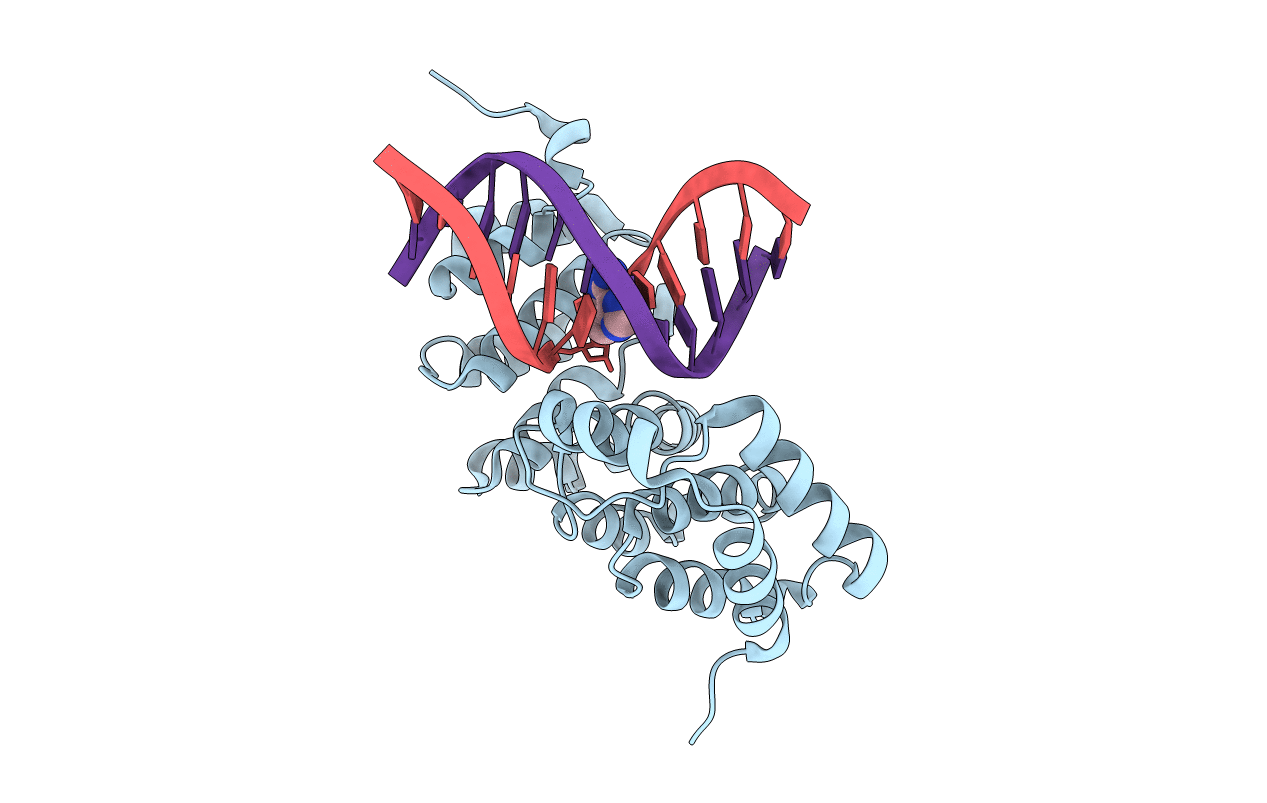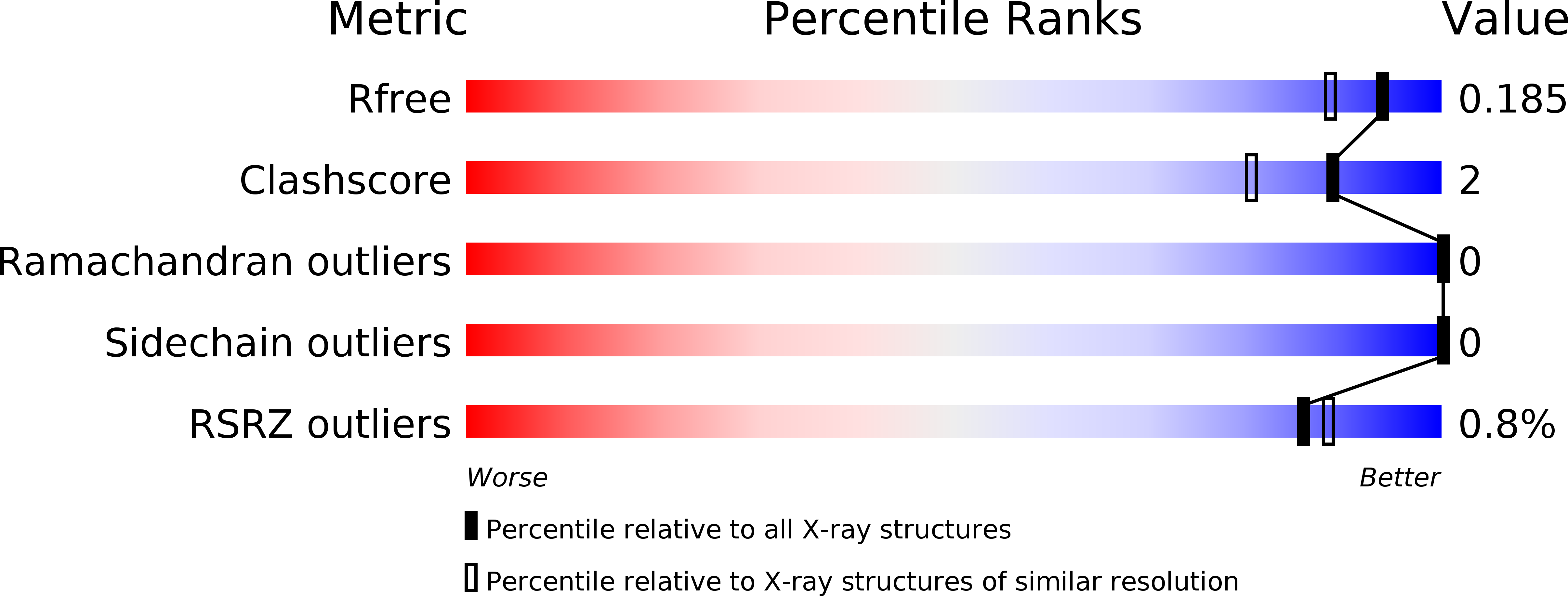
Deposition Date
2015-07-16
Release Date
2015-10-28
Last Version Date
2023-09-27
Entry Detail
PDB ID:
5CL9
Keywords:
Title:
Alkylpurine DNA glycosylase AlkD bound to DNA containing an abasic site and a free nucleobase (100% product at 240 hours)
Biological Source:
Source Organism:
Bacillus cereus (Taxon ID: 1396)
synthetic construct (Taxon ID: 32630)
synthetic construct (Taxon ID: 32630)
Host Organism:
Method Details:
Experimental Method:
Resolution:
1.54 Å
R-Value Free:
0.18
R-Value Work:
0.16
R-Value Observed:
0.16
Space Group:
P 1 21 1


